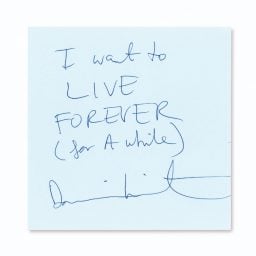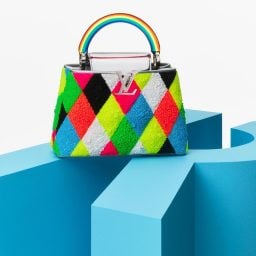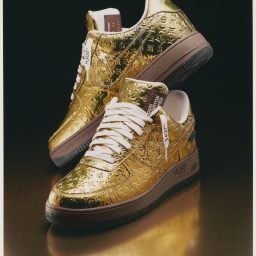The concept: give a legion of creators carte blanche to reimagine a Louis Vuitton icon in their own visual language. The result: “200 Trunks, 200 Visionaries,” an exhibition that collects all of these glamorous collaborations into one exhilarating show—a who’s-who baggage carousel of art, style, and design. Travel has been at the heart of Louis Vuitton since its inception, but art is nearly as intertwined. The entire modern era of the luxury brand, when it was reborn as a fashion house under the helm of Marc Jacobs, has been defined by fine-art collaborations with the likes of Richard Prince and Jeff Koons.
Conceived as a bicentennial celebration for the house’s namesake founder, the globally touring exhibition opened last month in Los Angeles, just up the street from Vuitton’s Beverly Hills men’s store. The L.A. iteration boasts a Frank Gehry-designed installation (he also contributed a trunk) and an “audio speakeasy” soundtracked by a functioning “jukebox trunk” of 200 tracks selected by DJ Benji B. There is also a host of wild-card contributors, including astrologer Susan Miller, Paralympic swimmer Théo Curin, Lego, and The Simpsons. The project lauds the legacy of Monsieur Louis Vuitton himself, a French carpenter who started the brand in 1854 as an upscale luggage company to produce luxurious trunks specifically designed to carry the fashions of the day.
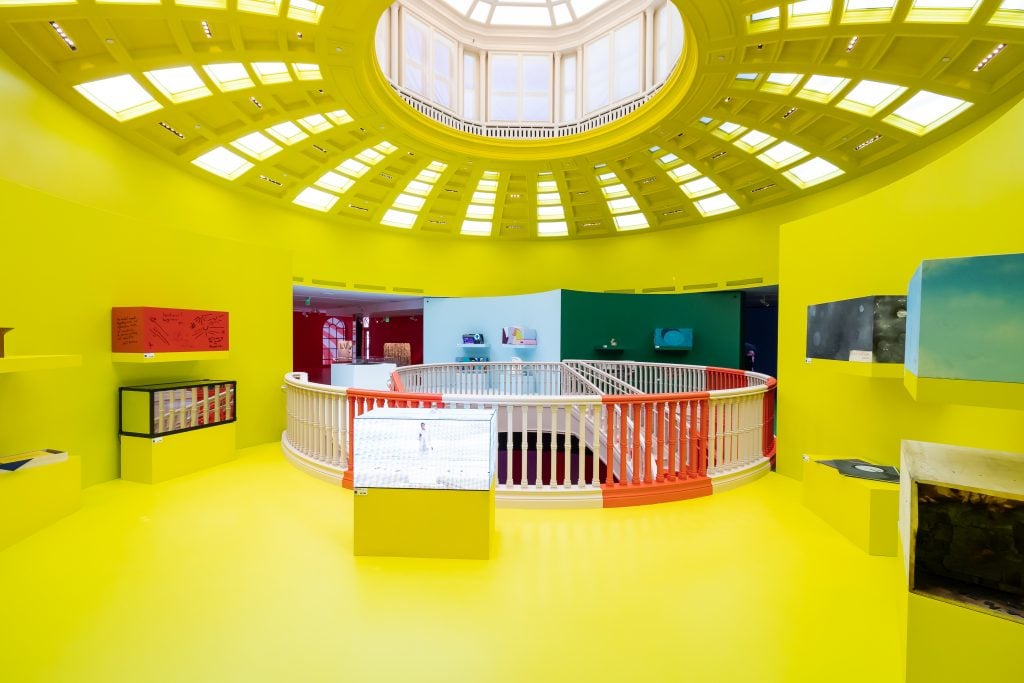
Installation view of “200 Trunks, 200 Visionaries” in Beverly Hills. Courtesy of Louis Vuitton.
Traditionally, trunks had been rounded on top for rain runoff, but Louis Vuitton revolutionized the industry with his flat-topped trunks covered in waterproof canvas. These stackable trunks became prime fodder for copycats, and his innovative canvas would soon evolve into the Damier print that’s synonymous with the brand today. Trunks have continually been produced throughout the brand’s existence at the same Asnières atelier personally established by the founder.
Faye McLeod, Louis Vuitton’s visual image director, helped curate the roving exhibition. “This project has always been about creativity—a real tribute to Louis’s ingenuity and entrepreneurial spirit,” she said in a statement. “We get to see how such a cross-section of talents answered the same brief while also taking a moment to appreciate the man himself.” And the trunk creators themselves are paying it forward: the company reports that from the donation of their fees, nearly 2 million euros have been distributed to 15 charitable organizations supporting young creatives.
After its L.A. residency, the exhibition is bound for New York this fall. Here are some of our favorite trunks in the show, paired with their respective artists’ statements on their radically different rectangular visions.
“200 Trunks, 200 Visionaries” is on view through September 6 at 468 North Rodeo Drive, Beverly Hills, Calif. Opening hours: Monday—Saturday, 10 a.m.–8 p.m.; Sunday: 11 a.m.–8 p.m. A digital catalog is available here.
Kris Knight
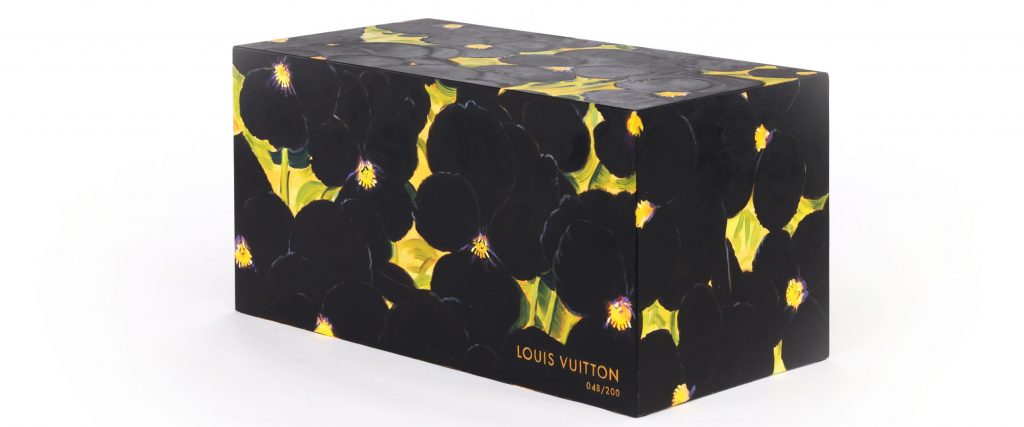
“For this project I wanted to pay homage to the Victorian black garden by creating a loose pattern of black pansies representing floral symbolism: mysticism, sorrow, and the yearning for everlasting love.” —Artist Kris Knight
Hans Ulrich Obrist
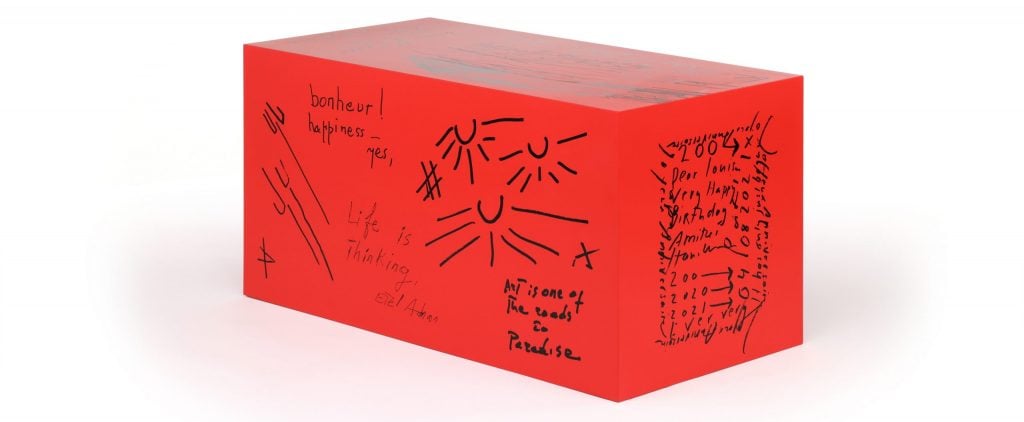
“Umberto Eco’s depiction of the (soon-to-be) lost art of handwriting was the starting point for my Instagram project, ‘The Art of Handwriting’. It was intended as a conflation of analogue and digital; the slow composition of the written note and the velocity of the Instagram post are brought together….The overwhelming image potential that Instagram opened up prompted me to find a structure for its use. It was during a holiday with the artist-poet Etel Adnan, artist Simone Fattal, and my partner, the artist Koo Jeong A, that this constraint became clear. On a stormy day, in a café, Etel was writing poems in a notepad, which I found incredibly beautiful….Since then, I have posted photographs of handwritten notes on Instagram at least once a day, each containing a message from individuals I meet.” —Curator Hans Ulrich Obrist
Qualeasha Wood
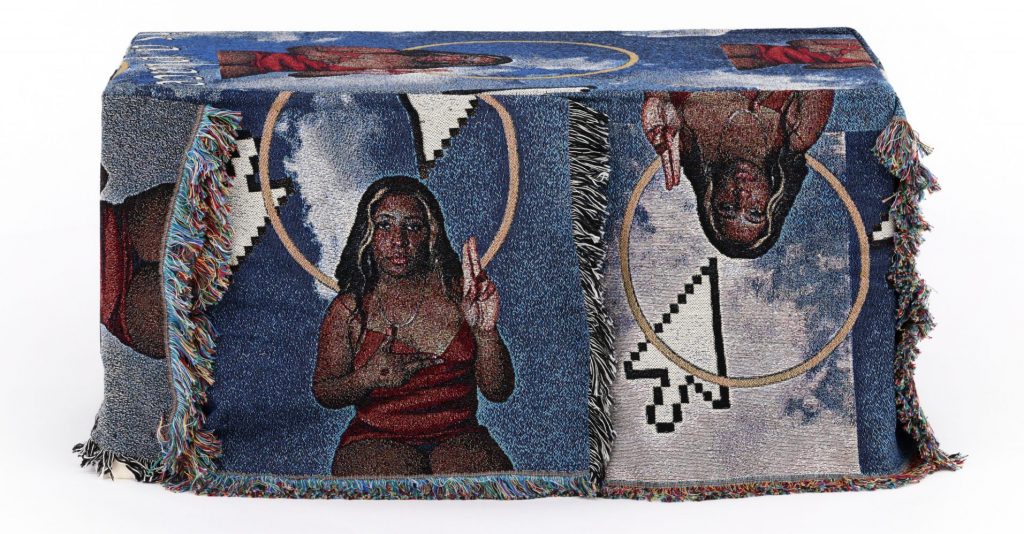
“My point of understanding always starts and ends with the recognition, whether by myself or by an audience, that I am indeed a queer African American Black woman. It is from this entry point that I view the world, considering my positionality, my agency, or usually lack thereof; my needs and wants, my desires, my limits, my comfort and discomfort, etc. It is under this lens that I embrace my role as a young hot ebony on the internet, and ask not only myself but my audience to contend with our relationships of consumption, worship, autonomy, and aesthetics as it relates to historical and modern contextualization of Black femininity and sexuality….Through mediums such as tufting, jacquard weaving, printmaking and new media, my work poses questions regarding the ‘What If…’.” —Artist Qualeasha Wood
Kunle Martins
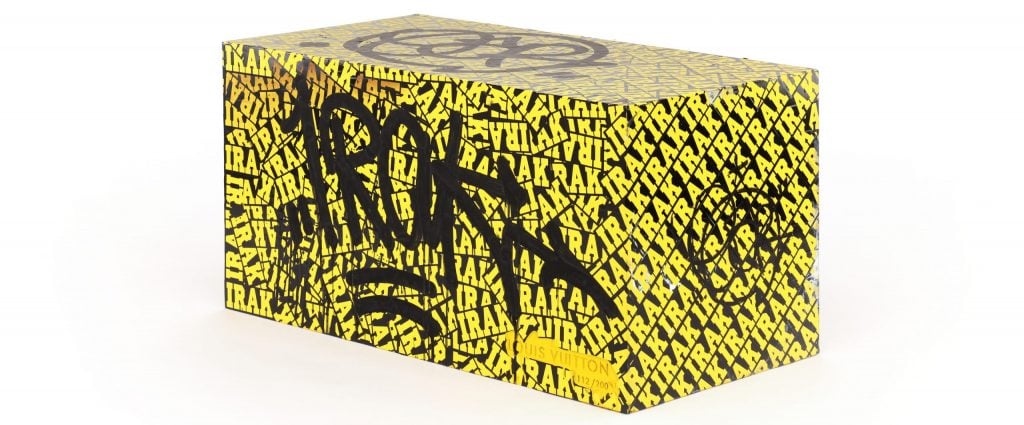
“I chose to cover the box in graffiti, then covered the graffiti with varying patterns of IRAK stickers. Then a bit more graffiti. The repeat logos are a theme I liken to taking the same tag over and over again throughout one’s graffiti career. A living monogram.” —Artist Kunle Martins
Krista Kim
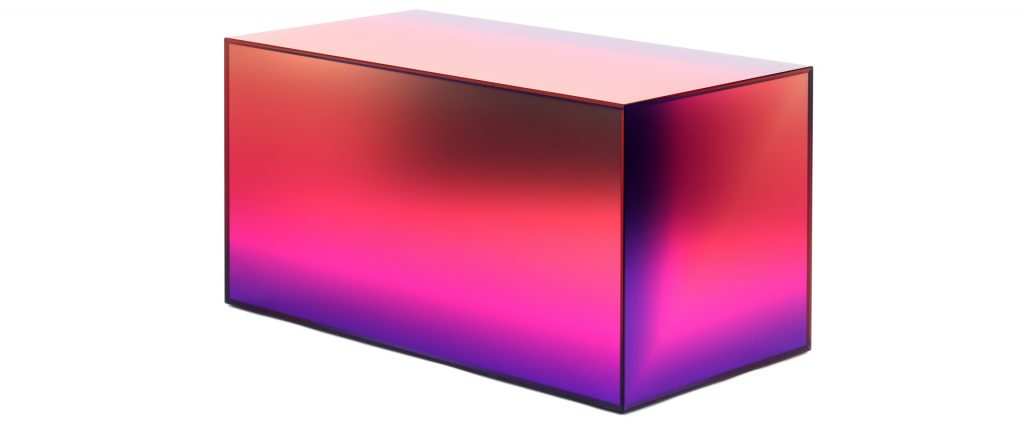
“The gradient transcends boundaries, transmuting colors into a spectrum that reveals unexpected beauty—gradient beauty is the spirit of fluid, digital, decentralized culture. Our future is the metaverse. The gradient represents hope, freedom, innovation, co-creation, and co-existence. Multiple colors exist as one, just as we are diverse human beings on the metaverse. We are progressively more fluid in race, nationality, sexuality, politics, religion, spirituality…we are a gradient. The metaverse will become our new parallel reality. We will have frictionless transition between V.R., A.R., and reality—this is quantum life.” —Digital artist Krista Kim









